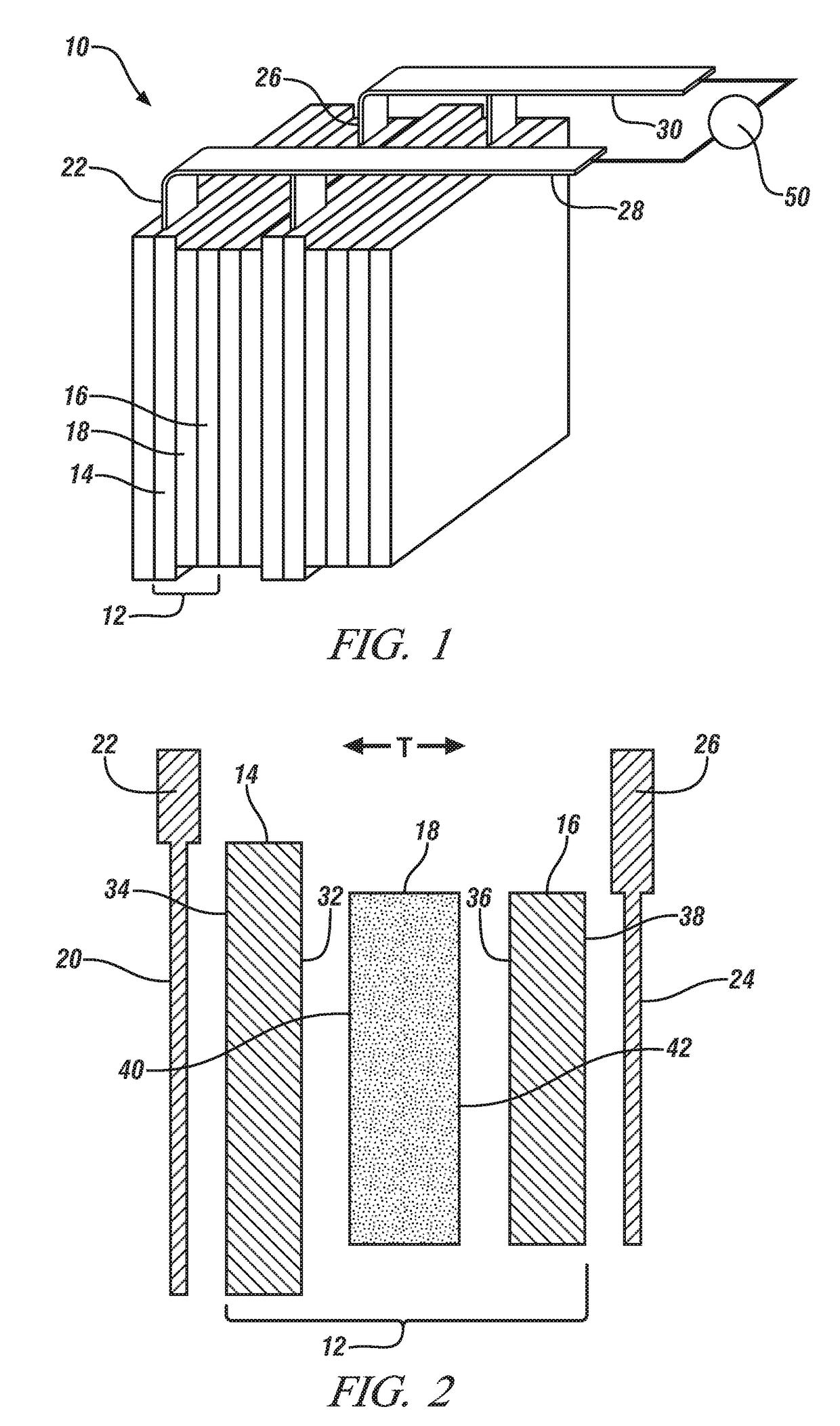Methods of making lithium ion battery separators
a lithium ion battery and separator technology, applied in the direction of electrical equipment, cell components, cell components, etc., can solve the problems of short circuit, low ion conductance, and inability to provide these types of polymers with a sufficient porosity across their thicknesses, so as to improve ionic conductance and improve thermal stability
- Summary
- Abstract
- Description
- Claims
- Application Information
AI Technical Summary
Benefits of technology
Problems solved by technology
Method used
Image
Examples
example
[0051]This Example demonstrates the tensile strength, ionic conductivity, and electrochemical cell cycle performance of a porous thin-film polymer separator, as described above, in comparison to a conventional monolayer polypropylene lithium ion battery separator obtained from Celgard, LLC (Charlotte, N.C.). The porous thin-film separator comprises a PEI polymer material matrix and a uniform internal dispersion of hydrophobic-treated fumed silica particles obtained from Cabot Corporation under the designation Cab-O-Sil®720. This particular separator is referred to in the remainder of this Example as the “inventive separator” for brevity.
[0052]The inventive separator was formed by a phase separation process in which a latent polymer solvent was used to make the polymer slurry. To begin, PEI was dissolved in dimethylformamide (DMF) at 90° C. followed by dispersion of the Cab-O-Sil®720 fumed silica particles. The resultant polymer slurry contained about 15 wt. % of the PEI and about 25...
PUM
| Property | Measurement | Unit |
|---|---|---|
| diameters | aaaaa | aaaaa |
| particle diameters | aaaaa | aaaaa |
| thickness | aaaaa | aaaaa |
Abstract
Description
Claims
Application Information
 Login to View More
Login to View More - R&D
- Intellectual Property
- Life Sciences
- Materials
- Tech Scout
- Unparalleled Data Quality
- Higher Quality Content
- 60% Fewer Hallucinations
Browse by: Latest US Patents, China's latest patents, Technical Efficacy Thesaurus, Application Domain, Technology Topic, Popular Technical Reports.
© 2025 PatSnap. All rights reserved.Legal|Privacy policy|Modern Slavery Act Transparency Statement|Sitemap|About US| Contact US: help@patsnap.com


